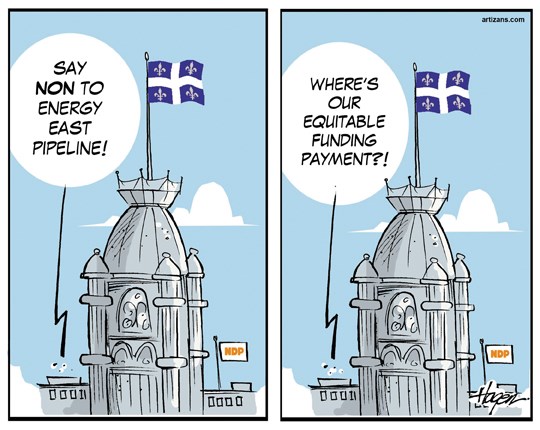As everyone from the Manitoba-Ontario border to Tofino knows, the local and provincial economies, which depend on resource extraction, have slowed.
So this is a critical time to get some perspective on the past.
Between 1994 and 2013, as the three western most provinces began to seriously reform spending and tax policies (Alberta in the 1990s, Saskatchewan partly in the 1990s and into the new century, B.C. beginning in 2001) Alberta attracted an average of $37,285 of private-sector investment per worker. That was followed by Saskatchewan ($29,024), Ontario ($9,132) and Quebec ($8,836) lagged far behind.
As a result, Alberta and B.C. recorded comparatively low unemployment rates despite substantial migration to both provinces from other parts of the country.
Of note, however, after Saskatchewan began to reform (lowering business taxes, for example) and strengthened its economy, interprovincial migration numbers reflected that shift. Since 2007, when the migration numbers turned positive, Saskatchewan gained 8,974 people 15 to 64 years old from other provinces.
That 15 to 64 age group can serve as an approximate proxy for Canadians in search of a job (let’s assume that teenagers and young adults in post-secondary education are a small slice of that group). Their movement can thus potentially impact subsequent unemployment numbers. Ergo, it’s fair to assume most people moved to Alberta, B.C. and more recently, Saskatchewan, for jobs.
The West’s relatively low unemployment occurred despite an influx of workers from other provinces to Alberta and B.C. Manitoba’s unemployment rate (5.6 per cent) was also low, but the province was bleeding people.
Healthy prices for goods or services (oil and gas, for example) obviously help regional economies. However, they alone don’t explain why Alberta and B.C. (and Saskatchewan, more recently) outperform central Canada in good times and bad, despite high levels of migration from other parts of Canada.
Government policy matters. Otherwise, resource-rich Venezuela would be wealthy and resource-poor Hong Kong would be destitute - which is the exact opposite of reality.
Here in Canada, as my colleagues have discovered, Alberta, Saskatchewan and B.C. have done relatively well on policies that matters to healthy economies: taxes, regulation, labour laws, property rights, et al. Such relative smarts are why these three provinces remain among the most economically free jurisdictions in North America.
So, however western provincial governments respond to low resource prices, if they care about jobs, they should ensure the attractiveness of their jurisdiction is not artificially hampered by eroding western advantages.
Mark Milke is a Senior Fellow with the Fraser Institute.
www.troymedia.com




